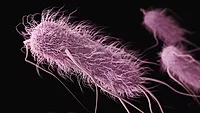UK Study Finds Low Presence of Salmonella on Retail Food, but High Genetic Diversity

Image credit: Dana Tentis via Pexels
A survey of non-typhoidal Salmonella (NTS) found on retail foods sold in the UK has shown the overall prevalence of Salmonella to be low, although there is great genetic diversity among the Salmonella that was present, which may hinder outbreak investigations and source attribution in the case of foodborne illness outbreaks.
Although the pathogen is a significant cause of foodborne illness, there is limited knowledge on NTS diversity on food and its contribution to human disease. Using whole genome sequencing (WGS), the study aimed to characterize the NTS genomes from retail foods in a particular region of the UK and assess the contribution to human NTS infections.
Samples were collected at retail food stores in Norfolk, UK between May 2018 and November 2019. The researchers collected 311 raw chicken, 311 leafy green, 311 pork, 279 prawn, and 157 salmon samples. The potential risk of NTS exposure from the different food commodities was investigated by sequencing the genomes of NTS isolates, determining the number of antimicrobial resistance (AMR) indicators present, establishing the genetic relatedness of food isolates to human clinical isolates, and discerning the diversity of food isolates.
NTS was isolated from 42 food samples, 199 isolates from which were sequenced. Of the five food commodities analyzed, 9.6 percent (30 of 311) of raw chicken and 1.3 percent (4 of 311) of raw pork samples tested positive for NTS. The prawn samples consisted of 217 raw samples, 3.7 percent (8 of 217) of which tested positive for NTS, and 62 cooked samples, none of which tested positive for NTS. No raw salmon or leafy green samples tested positive for NTS.
Fourteen Salmonella serovars were isolated from the food samples. The serovars were mostly specific to different food commodities, apart from S. I 4,[5],12:i:-, which was found in both pork and chicken samples. For chicken samples, S. Newport (found on two samples) and S. Enteritidis (found on nine samples) were only isolated from imported samples, while S. I 1,4,[5],12:i:- (on one sample), S. Kedougou (on one sample), S. Mbandaka (on one sample) and S. Ohio (on two samples) were only isolated from domestic samples (Fig. S1). S. Infantis was isolated from 14 total samples of domestic and imported chicken.
Sample storage and sample origin were strongly linked when it came to chicken samples, with 85 percent of imported chicken having been frozen compared to 1 percent of domestic samples. The exception was one chilled imported sample, from which S. Enteritidis was isolated. The only serovar isolated from chicken samples obtained from butcher shops was S. Infantis.
Of the 42 samples that tested positive for NTS, 29 contained at least one AMR NTS isolate and 18 contained at least one multidrug-resistant (MDR) NTS isolate. For NTS-containing chicken samples, 80 percent (24 of 30) contained at least one AMR NTS isolate and 53 percent (16 of 30) contained at least one MDR NTS isolate. For the four NTS-containing pork samples, all contained at least one AMR NTS isolate and half contained at least one MDR NTS isolate. None of the NTS isolates from prawns contained any AMR determinants.
Looking for quick answers on food safety topics?
Try Ask FSM, our new smart AI search tool.
Ask FSM →
The researchers compared NTS isolates collected from food to clinical UK isolates to determine their genetic relatedness. A higher proportion of chicken samples (6.1 percent) contained NTS that were within five single nucleotide polymorphisms (SNPs) of human clinical isolates compared to pork (0.6 percent) and raw prawn (0 percent) samples. Additionally, a significantly higher proportion of imported chicken samples (17 percent) were within five SNPs to human isolates compared to domestic chicken samples (2.3 percent). However, it is unclear whether imported chicken poses a greater food safety risk than domestic, because 85 percent of imported samples were frozen, and studies have shown consumer cooking practices for frozen meats to be lax.
S. I 4,[5],12:i-, S. Enteritidis, and S. Infantis were the serovars collected from retail food samples that included isolates that were within five SNPs of clinical cases. S. Infantis was the most common serovar isolated in the study, found in domestic and imported chicken samples. S. Infantis has increased in prevalence in countries around the world over the last two decades, attributed to the pESI gene that causes AMR, increases pathogenicity, and encourages biofilm formation. All S. Infantis isolates identified in this study demonstrated presence of pESI.
In total, 64 percent of the 42 NTS-positive samples in this study contained isolates that shared two or fewer SNPs; the rest of the samples were either colonized with a genetically diverse NTS population or may have been contaminated at multiple points in the production chain with diverse NTS. This population diversity highlights the need to culture multiple NTS isolates from food samples. The researchers stress that the prevention of future salmonellosis cases and outbreaks relies on continued surveillance of NTS found on retail food, using WGS to allow greater insight into its relationship to human clinical cases.








